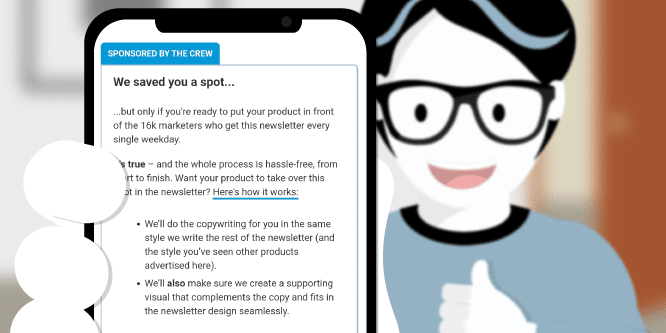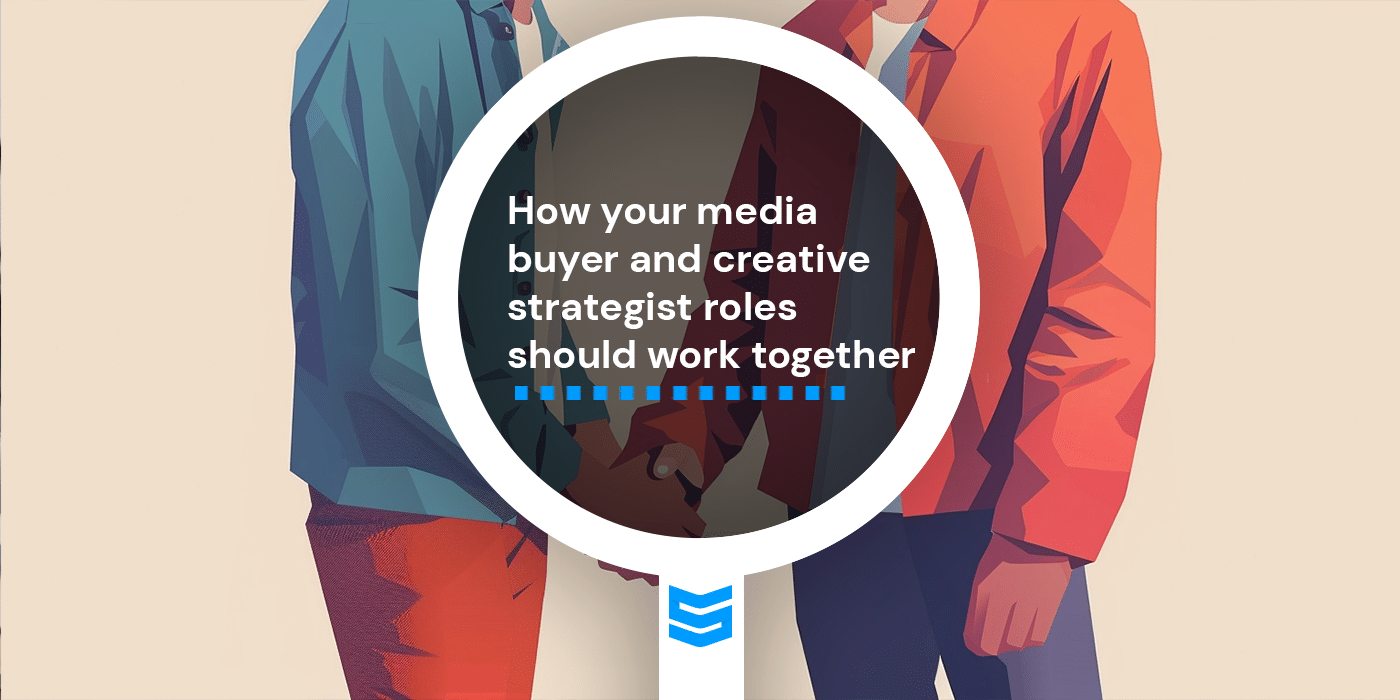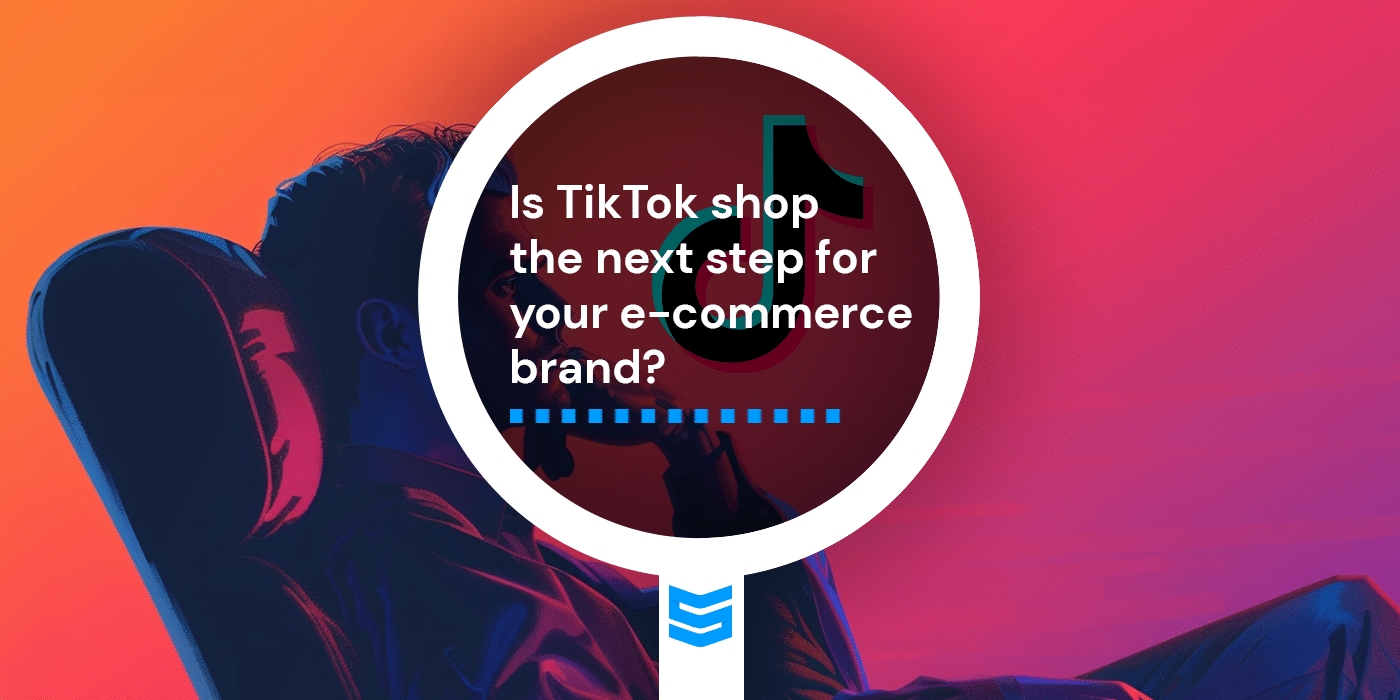Buying ads in newsletters can be a double-edged sword. You’re able to reach the target audience you want to connect with, but how can you be sure the process will go smoothly?
Fortunately, we run a newsletter – and we’ve seen just how good (and bad) newsletter advertising can be. In this guide, we’ll share some of our experiences and advice on the overall process for advertising in a newsletter.
We’ll get straight to the point: buying ads in newsletters can be great – it can beat FB Ads, but with a somewhat limited scale, and it’s great for launching new products to get the ball rolling initially.
However, there are some shady practices out there that can take your newsletter advertising experience from great to disastrous in the blink of an eye. Down below, we’ll be going through what matters, what doesn’t, and debunking some of the common misconceptions and ‘tricks’ you might come across in your search for the perfect partner.
Read Before You Buy
In theory, this goes without saying – but in practice, it’s easy to neglect. Before advertising in a newsletter, you should regularly read it for a couple of weeks, at the minimum.
This is the best way to understand how your product can be promoted. You will see the type of content each particular newsletter features, as well as who it appeals to. Once you’re familiar with the content, you should be able to get a good grasp on whether your audience is a good fit.
The Only Numbers That Matter
There are only two numbers that matter when you’re advertising in newsletters:
- Open rate.
- Click-through rate.
Just about all newsletters will share this information, but many share misleading numbers, often stretching the truth on the true definition of these key statistics.
Here are our thoughts on how we think they should be defined, as well as a few ways you’ll probably see them butchered:
Open Rate
The open rate is the number of unique subscribers that opened a newsletter from the total subscribers who received it.
How It Should Be Calculated
If 4,000 unique subscribers opened from 10,000 who received the email, the open rate is 40%. In other words (unique openers)/(unique recipients)*100.
How This Gets Misrepresented
We’ve seen this happen in two ways:
- Open rates based on total opens rather than unique openers. By this definition, the same person could open an email 100 times, and it’d be counted as 100 opens. This is quite misleading because you don’t reach more people, and you can end up with an open rate over 100%.
- Open rate defined as total clicks within the newsletter divided by total sends. When we heard this definition, we were speechless. This number isn’t even remotely similar to what an open rate should be (yeah, we get pretty passionate about this stuff).
Click-Through Rate (CTR)
It’s the number of unique subscribers who clicked on a link. It can be a CTR for a particular link, or a total CTR for who clicked at least one link in the whole newsletter.
How It Should Be Calculated
- For one particular link: The number of unique subscribers who clicked on that link divided by the total number of recipients. For example, if 400 subscribers click on a link from 10,000 recipients, the CTR is 4%.
- For the total of the newsletter: The number of unique subscribers who clicked at least one link divided by the number of recipients. For example, if 1,000 subscribers clicked at least one link from 10,000 recipients, the total CTR is 10%.
They are both relevant, of course. The first one shows the traffic sent to the particular sponsored link (or links), and the second one shows the overall engagement in the newsletter.
If the second number is high but the first one is low, it means the sponsored placement was not engaging. On average, the total number for the newsletter will be 2-3x more than the ad, at least in our case.
If the total is much higher, it means the ad was significantly underperforming in relation to the rest of the content – meaning your product may not be a good fit for the newsletter, or the ad might need to be rewritten.
How This Gets Misrepresented
The most blatant way this gets butchered is to mention only the total newsletter CTR, which is often 2-3x higher than the specific ad. For our newsletter, we mention the total CTR as a general engagement metric, and share examples of how different sponsored placements had different CTRs.
The second way this gets misrepresented is by calculating what is known as the click-through-from-opens rate (CTOR).
This is calculated by dividing the number of unique subscribers who clicked on a link divided by the number of unique openers. This is done to inflate the “CTR” and give a better impression than reality. For example, if 400 subscribers click on a link from 10,000 recipients, we say the CTR is 4% – but if we calculate it based on 4,000 who opened it, we now have a 400/4,000 = 10% CTR. It’s 2.5x higher!
This same method can be used to “massage” the total CTR too.
The third and most interesting method is when the CTR is calculated based on total clicks divided by unique openers. It’s like CTOR on steroids!
For example, one link is clicked on by 400 unique subscribers. Each subscriber clicks the link 5 times though so there are 2k clicks. And now we take this 2,000 number and divide it by the number of people who opened it – 2,000/4,000 = 50% CTR. Amazing! Much traffic, so engaged, wow!
Two More Things To Mention About Clicks.
Bots – Some spam filters, especially private ones for certain organizations, crawl links – this can trigger false clicks. They usually can be noticed in Google Analytics, because the clicks will register immediately as the newsletter goes out, and all come from the same data center. Amazon’s Boardman data center is a common one.
Clickloss – It exists. Around 5-10% of unique clicks won’t be recorded properly in Google Analytics. Usually, there’s also a small boost in direct or organic traffic that backs this up – meaning that though the clicks aren’t recorded, users are still getting to the right place.
If you’re thinking about advertising in a newsletter, make sure you ask for these exact numbers. The metrics we ask for, specifically, are unique openers and unique clicks on the sponsored placement. Based on this, you can calculate a true CPC and CPM.
What Works And What Doesn’t
Any newsletter has limited scale in comparison to Facebook and Google. You should think of newsletters as hyper-targeted audiences – less scale, but very high quality.
CPMs and CPCs are also not comparable. Because the quality is generally much higher from a newsletter, the conversion rate is also higher.
This won’t apply to every single case, but we’re talking about things from a general perspective.
What Works Well
- Leads – if you are looking to get subscribers to your newsletter, your trial, your demo and so on, newsletters are great. Finding that initial audience, those early adopters, is probably easier with newsletters than any other channel.
- Sales of low to medium priced offers – products under $99 can sell pretty well, especially if the product and newsletter are in the B2B space.
- Brand awareness – while harder to measure, newsletter advertising is a great way to increase brand awareness. Audiences are more engaged, and you’re (hopefully!) reaching the right people with your ad.
In general, using newsletters for “top of the funnel” campaigns, product launches, and brand awareness works very well. We find newsletters to be a good mix of direct response performance and brand awareness when done right – both when we advertised in other newsletters, and when brands advertise with us in Stacked Marketer.
What Doesn’t Work Well
- High ticket products – they might work, but it’s close to impossible to track. Nobody sees an ad for a $1k product in a newsletter, clicks the link, and makes a purchase right away. With high ticket items, people generally do their research and think it through.
- Middle or bottom of funnel approach – it’s generally a bad idea to assume readers already know about you or your product. Offering nothing more than a discount or testimonials when the reader isn’t familiar with your product is a bad idea.
These are soft assumptions, because tracking and attribution is far from perfect. High ticket items may perform well in some cases, but results are almost impossible to track as sales may come weeks or months later.
We’ve also learned that brand awareness is a big factor. The bigger the newsletter you advertise in, the bigger the boost in organic search over the following few days.
How We Think About It
We try to understand their product and explain how we think it should be presented to our audience – that’s essentially our entire sales process!
We explain the numbers to potential advertisers, and we recommend that anyone who gets in touch about advertising with us reads at least 4-5 editions of the newsletter so they better understand our product and our audience.
Aside from that, we try to make everything an all-inclusive service: we develop and promote the sponsored piece, creating a hassle-free experience for the sponsor.
We also don’t make calls mandatory – most deals can be solved in email exchanges, but if you’d like to jump on a call, we’re always happy to do that as well.
After two years of being on both sides of this relationship, our approach is one where we try to act as advisors to a potential partner. To put it another way – If we had the exact product our partner wants to promote, how would we present it to our readers?






